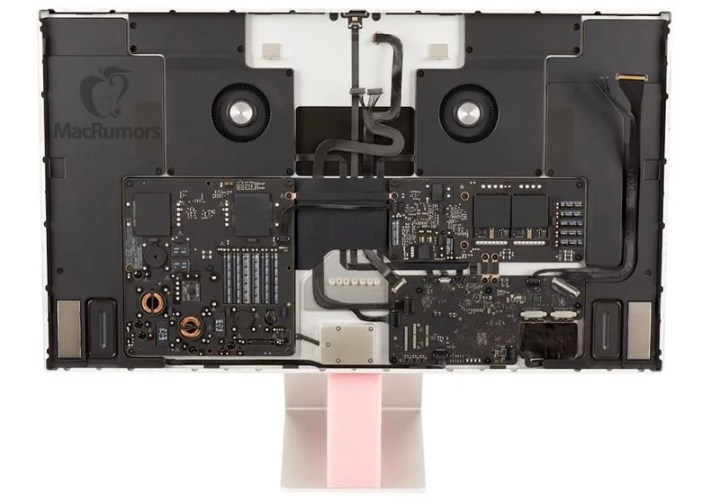As is customary with every Apple product launch, a new teardown has given us the first look of the company’s new premium monitor, the $1,599 Studio Display.
MacRumors managed to get a look at the product’s internal components and overall design. However, instead of the customary detailed breakdown performed by enthusiasts, the image was actually obtained from Apple’s documentation it provides for technicians.

In any case, we still have our first look at the inner workings of the Studio Display. As pointed out by MacRumors, Apple outfitted its monitor with three large boards under the hood. The boards situated at the left and top-right sides provide the power supply. Meanwhile, the bottom-right board accommodates the logic board, which contains the monitor’s A13 Bionic chip, in addition to its 64GB of storage module.
As for the Studio Display’s cooling components, Apple engineers integrated two internal fans situated on either side of the central wiring system.
One of the Studio Display’s standout facets is its six-speaker sound system. Four of those speakers can be seen within the bottom corners, which as MacRumors highlights, bears a resemblance to the internal speaker placements on the 24-inch iMac.
Finally, as we touched on above, the cables seen in the image attach both the display panel and the built-in 12MP Ultra Wide webcam directly to the logic board.
A more extensive breakdown of the Studio Display’s inner workings from teardown specialists iFixit is currently in the works. Notably, the website states that Apple’s new monitor is “closer to an iMac than an iPad.”
Ever since the Studio Display launched, its poor reviews led Apple to release an update to address certain issues. There have been concerns surrounding its $1,599 price tag, too, which Apple countered by calling the device “very accessible, very mainstream.”
Some may argue it’s not as mainstream as it could be, though: Although it does connect to traditional non-Mac PCs, certain key features have been disabled, such as the True Tone and Center Stage elements.
Looking beyond its compatibility with Windows-based systems, there are a few other drawbacks that can’t be ignored — especially for such an expensive monitor — including the lack of HDR support and ProMotion. And if you’re looking to adjust the height of the monitor itself, you’ll need to pay Apple another $400.
Apple is reportedly already working on the successor to the Studio Display, where it’s likely to address the aforementioned problems with a Studio Display Pro model.



